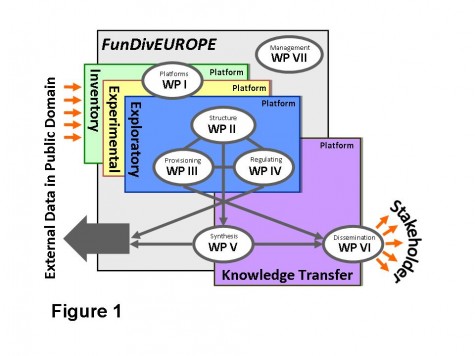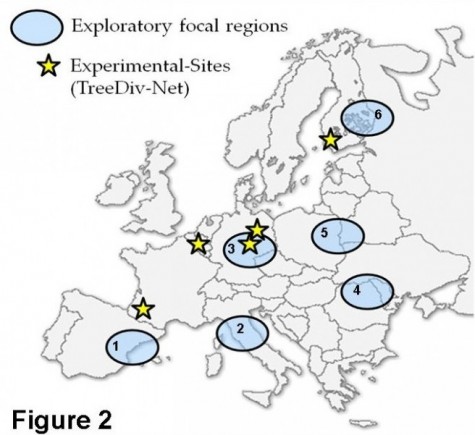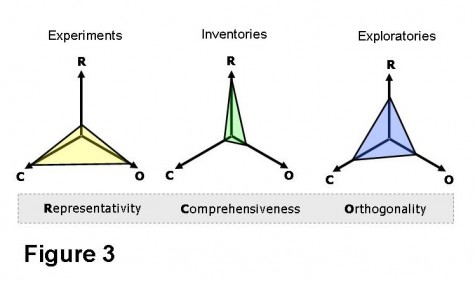Research platforms and Workpackages
In FunDivEUROPE there will be seven work packages operating on four platforms – three research platforms and one devoted to knowledge transfer processes (Figure 1).
The research platforms can be seen as ‘physical’ or ‘digital’ entities from which novel or previously hidden information on the functional significance of forest diversity can be extracted with experimental, observational, statistical or simulation methods. There will be two physical platforms, the Experimental Platform consisting of the existing and independently funded network of tree diversity experiments (TreeDiv_Net) and the Exploratory Platform, a new observational platform consisting of six clusters each comprising about fifty forest stands that form a diversity gradient under otherwise comparable management and environmental conditions (see Figure 2 for the location of the sites in Europe).
The digital Intentory Platform, a compilation of relevant information from national forest inventories and other observational networks (e.g. FutMon) as well as complementary information on environmental and management-related covariates complements the forest-related data base.
These three research platforms complement each other with respect to representativeness, comprehensiveness and orthogonality of the related information on biodiversity – ecosystem functioning relationships (Figure 3).
Orthogonality refers to the ability of a design to detect and quantify the effect of diversity per se against a background of various other influencing factors and covariates (species identity, environment, management, etc.). This is only possible if diversity is little correlated with these factors (i.e. orthogonal).
Comprehensiveness refers to the spectrum of ecosystem functions and services quantified in a study. As forest ecosystems provide a multitude of functions and services it is desirable to simultaneously measure as many variables as possible (i.e. multifunctionality, e.g. carbon sequestration, water cycling, nutrient retention, habitat provision, timber production etc.).
Representativeness refers to the relevance of the findings for the existing forest ecosystems in the real landscape. The better the design reflects the existing forest types, soil types and age structure, the easier it becomes to transfer the results to real world conditions.
Basic philosophy for field data collection
The basic philosophy of FunDivEUROPE with its focus on forest multifunctionality is the “all measurements on all plots”-appraoch. Only by adopting this approach, the statistical power to quantify species and/or functional diversity effects on ecosystem functioning against a background of confounding covariates is high enough. Temporally and spatially repeated sampling within a plot needs to be kept at a minimum and also the installation of permanent equipment in all plots is prohibitive. The ideal measurement is therefore one that integrates processes spatially and over longer time scales and involves little sampling effort in the field.



